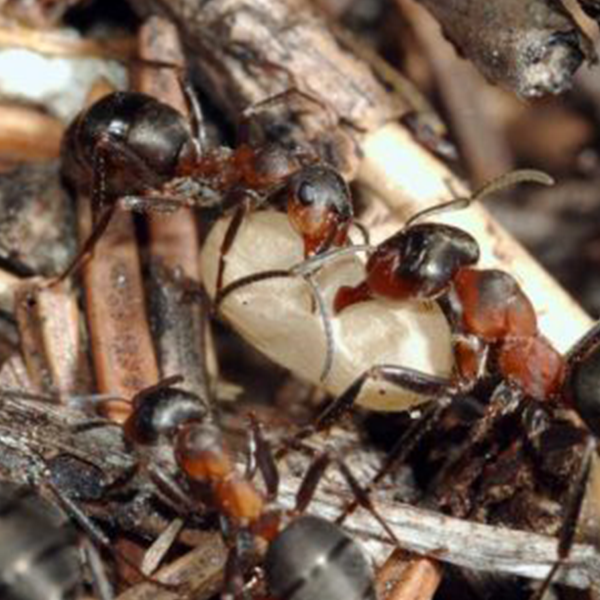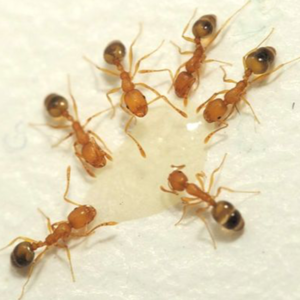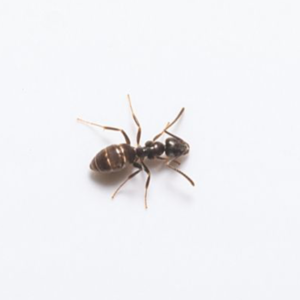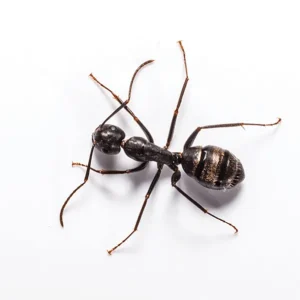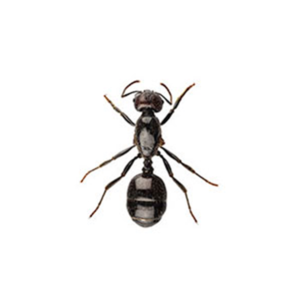Moisture Ant Identification
Moisture ants are a common ant species in North Carolina and get their name from their habit of nesting in high-moisture areas. Wood invaders, moisture ant colonies are generally located in decayed logs and stumps, but may also occur in soil. They feed on sweet materials and also tend aphids for their honeydew. These ants are not a primary structural pest, but they can speed the deterioration of wood. They also become a nuisance as they enter homes in search of food. Frequently associated with decayed and rotting wood, moisture ants can invade homes and structures.
What Do Moisture Ants Look Like?
Moisture ants, a species typically found in damp environments, are small in size, usually about 1/8 inch long. They are typically yellowish-brown to dark brown in color. A distinguishing feature of these ants is their translucent abdomen, which gives them a slightly moist appearance, hence their name.
Signs of a Moisture Ant Infestation
Signs of a moisture ant infestation include sightings of the ants themselves in areas with high humidity or moisture, such as bathrooms, kitchens, and basements. Other indicators include damaged wood that appears softened or decaying due to moisture.
Habitat, Diet, Life Cycle & Bites
Where Do Moisture Ants Live?
Moisture ants construct galleries in rotting wood within which they feed. As their name implies, moisture ants prefer to live in damp and humid environments. Outside, these ants like to inhabit wet areas such as soil or rotting wood. They will nest in moist ground, generally in a crawl space, and will construct elaborate mud tubes that resemble a sea sponge between the ground and wood. Sometimes their structures are mistaken for subterranean termite tubes. Inside homes, these ants are often discovered behind walls, especially during renovations and they can infest areas with water damage, such as around leaking pipes or in damp basements.
Diet of Moisture Ants
The diet of moisture ants includes the honeydew produced by aphids and scales. They also feed on sweet substances and can scavenge for dead insects or other protein sources.
Life Cycle of Moisture Ants
Moisture ants undergo a complete metamorphosis, starting from eggs, progressing through larval and pupal stages, and finally emerging as adults. Their colonies can grow rapidly in suitable conditions.
Moisture Ant Bites
Moisture ants can bite, however, their bite is generally painless, they are usually non-aggressive and pose little threat in terms of physical harm.
Are Moisture Ants Dangerous?
Moisture ants are not dangerous, but they can be a sign of underlying moisture problems in a structure. Their presence often indicates issues like water damage or rot, which can lead to more serious structural problems. They are largely nuisance pests as they find their way into kitchens and feed on sweet materials. These ants thrive in walls around plumbing fixture leaks, roof leaks, and any other source of water that has made wood damp. Swarming occurs in spring and is one of the most common signs of moisture ants in the area. If left unchecked, moisture ants will continue growing their colony. If you suspect a moisture ant infestation, contact a professional ant exterminator.
How to Get Rid of Moisture Ants?
Eliminating moisture ants involves addressing the moisture issues that attract them. Repairing leaks, improving ventilation, and removing damp or decaying wood are crucial steps. In some cases, baiting and other professional ant treatments may be necessary.
Moisture Ant Prevention Tips
Preventing moisture ants requires maintaining a dry environment. Regularly inspect for water leaks, ensure adequate ventilation in attics and crawl spaces, and keep gutters and downspouts clear to prevent water accumulation.
Need help with Moisture Ants control?
FAQs
Are Moisture Ants Harmful?
While moisture ants themselves are not harmful, their presence can indicate potentially damaging moisture issues in your property.
How Do I Know If I Have Moisture Ants?
If you notice small, yellowish-brown ants in damp areas of your home or where there is water-damaged wood, then you may have a moisture ant infestation.
Do Moisture Ants Bite?
Moisture ants typically do not bite humans. They are not aggressive and are more of a nuisance due to the conditions they indicate rather than a direct threat.

